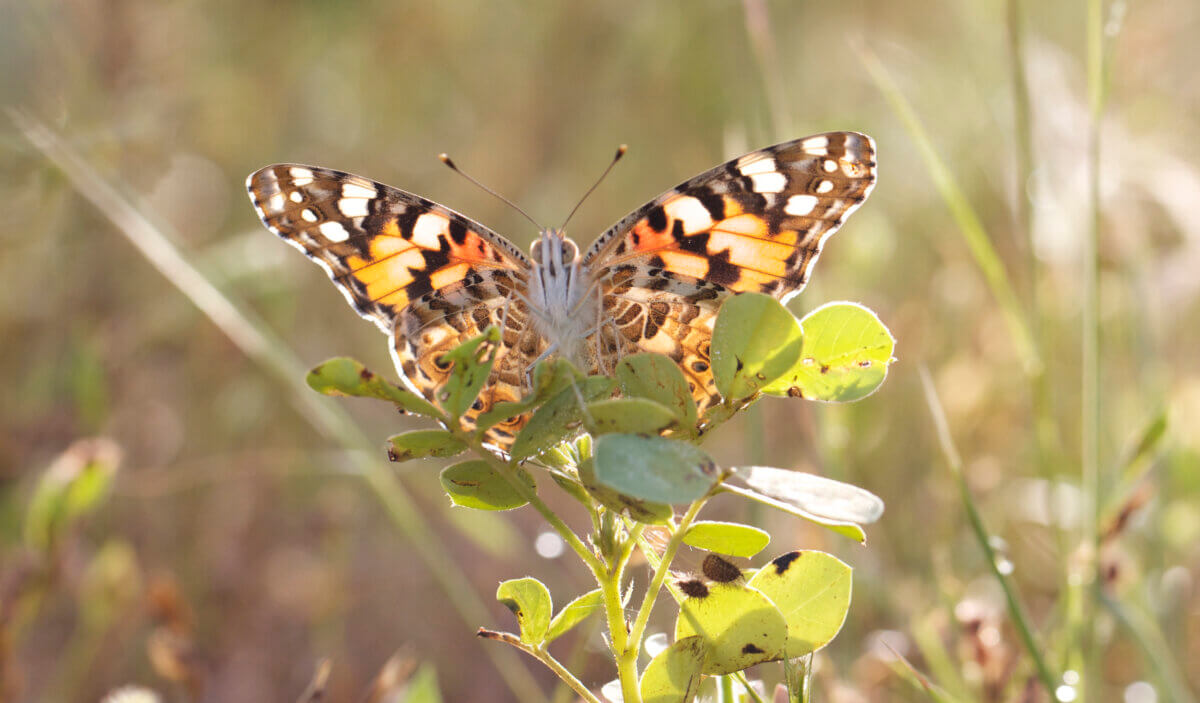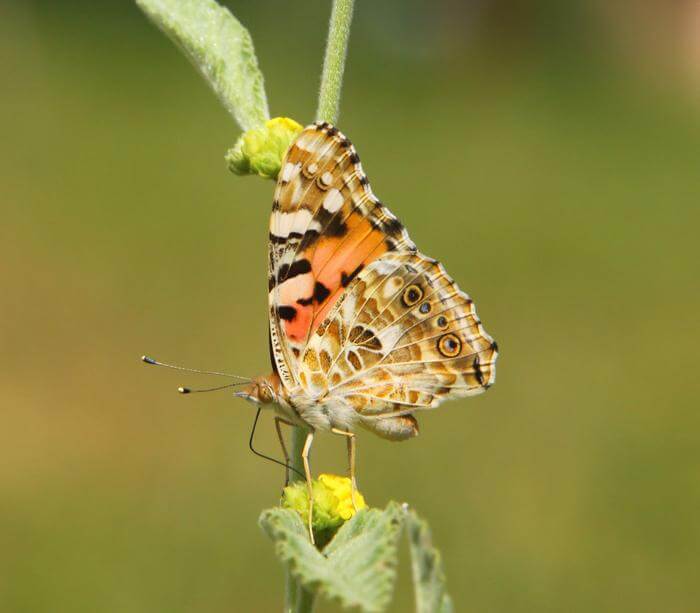
A painted lady Butterfly. (Credit: Roger Vila)
MADRID, Spain — For the first time, scientists have documented a group of butterflies flying across the Atlantic Ocean. The impressive transatlantic migration spanned over 2,600 miles from West Africa to French Guiana in South America.
The painted lady butterflies, Vanessa cardui, set the record for the longest transoceanic flight for an insect. Researchers first identified several painted lady butterflies on the Atlantic beaches of French Guiana — a species not native to South America. The findings were documented in a study published in Nature Communications.
“We tend to see butterflies as a symbol of the fragility of beauty, but science shows us that they can perform incredible feats. There is still much to discover about their capabilities,” says study co-author Roger Vila, a researcher at the Institute of Evolutionary Biology (IBE, CSIC-Universitat Pompeu Fabra), in a media release.

Methodology: Tackling the mystery
When scientists investigated where these butterflies came from, one hypothesis was that these butterflies traveled from North America, where the nearest populations are found. Other theories, while less likely, were that the butterflies flew all the way from Europe or Africa.
The research team examined wind patterns and found a sustained directional pattern from West Africa, which created a realistic chance the insects crossed the Atlantic Ocean. They collected samples from different populations of painted lady butterflies across different continents to figure out which type of butterflies landed in South America. Researchers also studied pollen DNA the butterflies had on their bodies.
Finally, the team analyzed the stable isotopes of hydrogen and strontium in the butterflies' wings. The wings contain chemical signatures unique to where the butterflies lived as caterpillars, allowing scientists to map out their specific origin.
Results: From Africa to South America
The genetic information the researchers collected on the butterflies revealed that the group came from habitats in Europe and Africa, ruling out a North American origin.
Pollen DNA from the butterflies revealed evidence for two plant species found only in tropical Africa. The information showed the butterflies definitely visited flowers in that region. Additionally, the chemical signatures on the wings showed their origin was likely in Western European countries such as France, Ireland, the United Kingdom, or Portugal.
“The painted lady butterflies reached South America from West Africa, flying at least 4200 km over the Atlantic. But their journey could have been even longer, starting in Europe and passing through three continents, implying a migration of 7000 km or more. This is an extraordinary feat for such a small insect,” explains Clément Bataille, a professor at the University of Ottawa in Canada and co-author of the study.
Traveling nonstop from Africa to South America would have been extremely taxing. The authors estimate the voyage took five to eight days and was likely possible because of favorable wind currents.
“The butterflies could only have completed this flight using a strategy alternating between minimal effort to avoid falling into the sea, facilitated by ascending winds, and active flight, which requires more energy consumption. We estimate that without wind, the butterflies could have flown a maximum of 780 km before exhausting all their fat and thus their energy,” says Eric Toro-Delgado, one of the study’s co-authors.
Discussion & Takeaways
The Saharan air layer was an important aerial highway for the butterflies. These wind currents happen throughout the year and carry large amounts of Saharan dust from Africa to America. They are also important in biogeochemical cycles but this is one of the few instances seeing the effects of these wind currents as transportation for living creatures.
“This discovery opens new perspectives on the capabilities of insects to disperse over long distances, even across seas and oceans. It is possible that we are underestimating the frequency and impact of these movements on our ecosystems,” says Gerard Talavera, the corresponding author of the study. “Throughout history, migratory phenomena have been important in defining the distributions of species that we observe today.”
With rising temperatures from climate change, the authors say it is possible migration patterns of animals who cross continents will change. The shifting climate patterns could affect biodiversity and ecosystems worldwide.
“It is essential to promote systematic monitoring routines for dispersing insects, which could help predict and mitigate potential risks to biodiversity resulting from global change,” adds Talavera.










